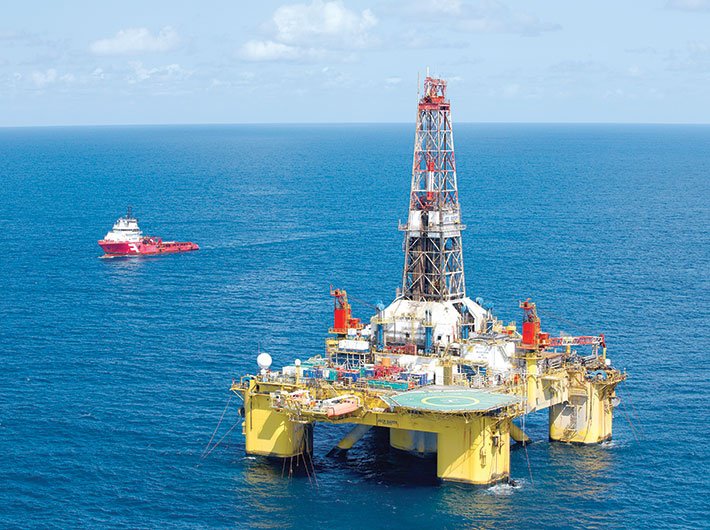The government is rigorously working to combine all the major state-run oil PSUs to take on the global players
The acquisition of the government’s 51.11 percent stake in Hindustan Petroleum Corporation Limited (HPCL) by Oil and Natural Gas Corporation (ONGC) is a step ahead in the creation of an integrated oil behemoth. The idea of establishing a public sector oil major was proposed in the 2017-18 budget, to enhance capacity to bear higher risks, avail economies of scale, take higher investment decisions and create more value for the stakeholders. The proposal was hailed by petroleum minister Dharmendra Pradhan.
With the HPCL-ONGC deal, speculations are rife now that the Maharatna PSU Indian Oil Corporation Limited (IOCL) would soon acquire the government’s 66.13 percent stake in upstream enterprise Oil India Limited (OIL); and another oil marketing company, Bharat Petroleum Corporation Ltd (BPCL), would take over Gas Authority of India Ltd (GAIL) to become a fully integrated energy company in this fiscal. IOCL and BPCL are yet to get the cabinet nod for this plan.
But what is the reason behind the Modi government’s sudden interest in having an oil giant? Industry experts attribute two main motives behind this. First, to create an oil major of the size of top 10 petroleum companies in the world, which will enable it to negotiate prices in the global market. Second, establishing footprint in the overseas market by taking a cue from an exploration major like ONGC, which has expanded its global presence by acquiring small oil companies in other nations.
The oil major will also help the country in raising its local oil production. At present, India imports about 80 percent of its oil. The proposed oil monolith would be able to compete with the likes of global energy majors like Exxon, BP, Shell, Chevron and Total. Currently, Exxon is the world’s largest oil company.
Also, the proposed mergers of the government-run oil enterprises, both upstream and downstream, would reduce inefficiencies in the management.
Industry experts say that the state-run oil companies should acquire government stakes in the not-so-profit-making energy enterprises to become a larger entity and acquire oil assets overseas to compete with private firms in the domestic market.
The PSUs which come under the ministry of petroleum and natural gas include Balmer Lawrie & Co. Ltd, BPCL, Biecco Lawrie Co. Ltd, Chennai Petroleum Corporation Ltd, Engineers India Limited, GAIL, HPCL, IOCL, Numaligarh Refinery Ltd, Oil India Ltd and ONGC. Mangalore Refinery and Petrochemicals Ltd is a PSU subsidiary.
The ONGC board approved the acquisition of HPCL at a cash purchase consideration of Rs 473.97 per share, taking the total acquisition cost to Rs 36,915 crore on January 19, 2018.
With a turnover of Rs 2,13,489 crore and profit after tax of Rs 6,502 crore in 2016-17, HPCL ranks at 384th position in Fortune Global 500 and at 48 in Platts 250 Global Energy Companies.
Analysts say that the HPCL-ONGC merger has helped the government in exceeding its Rs 72,500 crore disinvestment target for 2017-18. The disinvestment target for 2018-19 has been set at Rs 80,000 crore.
An executive of a multinational firm, which works closely with oil marketing companies (OMCs), on condition of anonymity says that the so-called merger [HPCL-ONGC] is actually share acquisition. The government wants to raise money by disinvesting its stakes in oil companies.
Deepak Mahurkar, partner and leader, India oil & gas industry practice, PwC, says that the HPCL-ONGC acquisition will significantly support the government’s objective of bridging the fiscal deficit. The acquisition also offers opportunities for the two companies to strike synergy of operations since one is an upstream exploration and production company, and the other is a downstream refining and marketing company.
Pranav Haldea, MD of Prime Database Group, a market tracker organisation, says that essentially the money is going out from one pocket to another. The government is taking money from the balance sheet of one PSU and putting it in its coffer.
Officials in the ministry of petroleum and natural gas, however, are tight-lipped about how other proposed mergers would take place, as it is a task easier said than done. Before the merger, these oil companies need to overcome several challenges like human resource integration, addressing concerns of shareholders and staff lay-off. “Merging oil PSUs is an uphill task as the PSUs have different structures, operational systems and cultures,” says a retired IOCL official.
Also, consumers might be at the receiving end in case of mergers like HPCL-ONGC. Experts believe that post-merger there will be a plunge in competition, and consumers, who earlier benefited from the competition among the state-controlled oil marketing companies’ retailers, would lose big time.
Brushing aside these concerns, Mahurkar of PwC says that the two PSUs [HPCL-ONGC] are not merging; the stakes are being purchased by other oil PSU. Also, since the two PSUs are by and large distinct businesses, competition aspect is not getting compromised.
“Since the share acquisition is among government-run same-sector companies, there won’t be issues. There will be no volatility in oil prices. The oil major will not be affected by change in international crude oil price. The balance sheet would become bigger and it will be massive at par with a few global oil companies if not the major energy players like Exxon, BP or Shell,” he says.
If Indian oil companies become larger and have a higher market share, they can take on global oil majors and compete in the global market, says Haldea. There have been a lot of mergers among the oil companies in the oil and gas industry globally. “Shareholders will benefit if the merged companies do well,” he says.
The MNC official quoted above further says that the integrated oil giant will not command monopoly in the Indian market as state-run oil marketing companies like IOCL, HPCL and BPCL have only 25 percent of the market share. The only hurdle will be in getting the SEBI’s nod, but considering the fact that both the companies are government-owned, there will be no major issues. By merging entities, one can reduce the number of PSUs which are in operation, because some of them are in the same sector. The government should not be in any kind of business – rather it should focus its energies on sectors like infrastructure, education, healthcare and defence, Haldea says.
“The government’s role should be more of creating conducive environment and competition. There won’t be major hurdles in the proposed mergers [BPCL-GAIL and IOCL-Oil India] because no private player is involved. It is not like any action is benefiting a single entity like a promoter in a private company. In this case, the government is the promoter. There can’t be allegations of any wrongdoings against the interest of minority shareholders,” he adds.
But of course there will be some collateral damage in terms of job cuts. Haldea explains that one of the main reasons of any merger is to cut down costs. “I expect that the government would compensate and will come out with voluntary retirement scheme options for employees,” he remarks.
Across all industries, historically, by way of mergers and acquisition, there is a consolidation which helps in increasing market share which has its own benefits of commanding pricing power, Haldea says. For instance, in civil aviation, if 80 percent of the market share is controlled by a single entity, it would dominate the sector and make others incur losses, he elaborates.
vishwas@governancenow.com
(The article appears in the February 28, 2018 issue)

